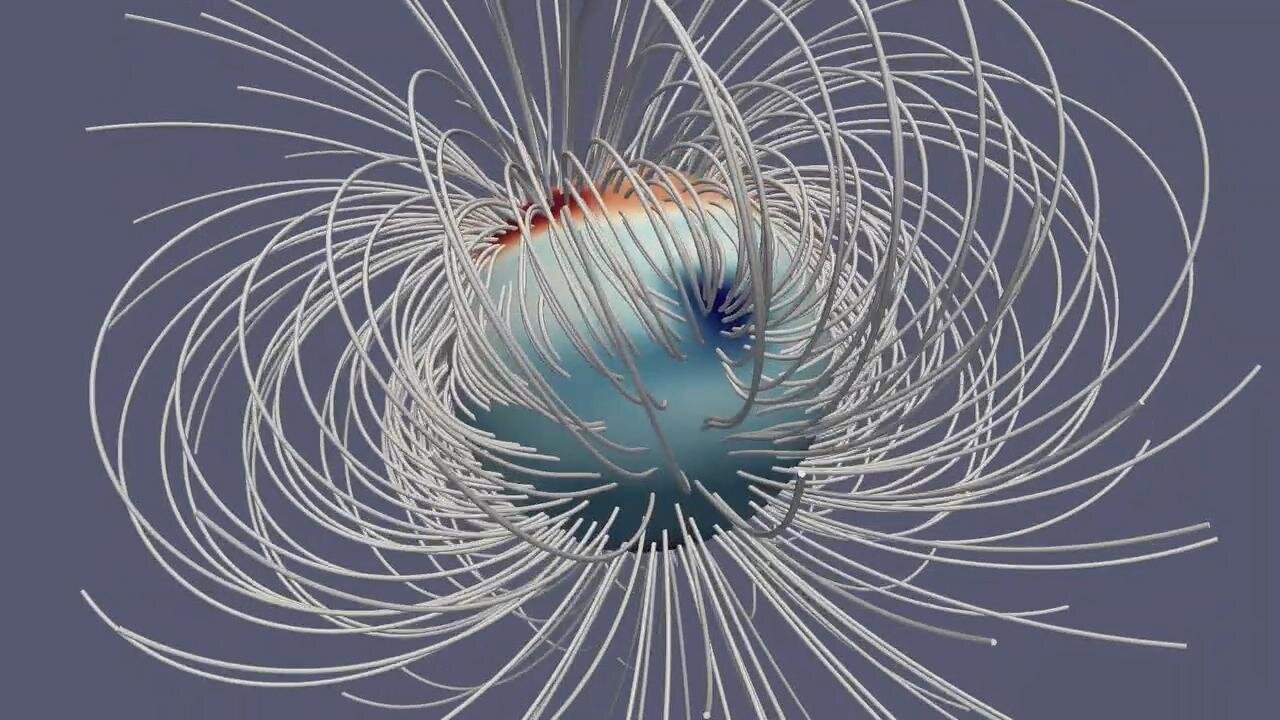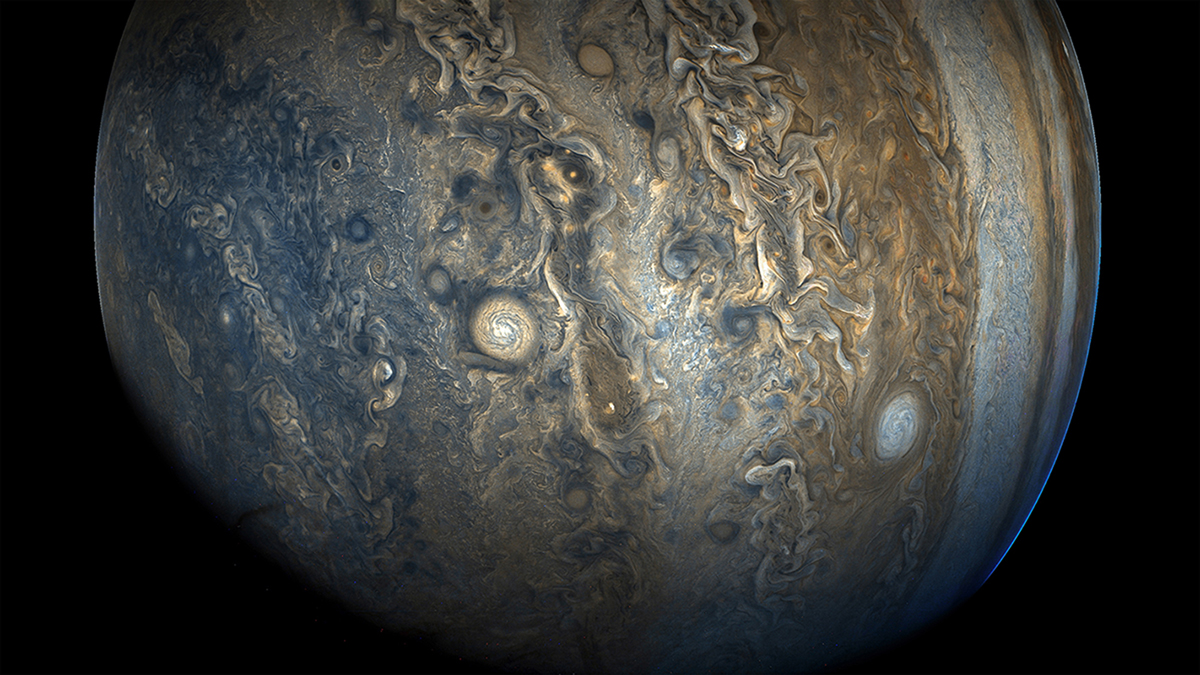Hidden Winds on Jupiter May Be Messing with Its Enormous Magnetic Field

Jupiter's magnetic field has changed since the 1970s, and physicists have proved it.
That's not exactly a surprise. Earth's magnetic field, the only planetary field for which we have good ongoing measurements, changes all the time. But the new information is important, because these small changes reveal hidden details of a planet's internal "dynamo," the system that produces its magnetic field.
In a paper published May 20 in the journal Nature Astronomy, a team of researchers looked at magnetic field data from four past missions to Jupiter (Pioneer 10, which reached Jupiter in 1973; Pioneer 11, which reached Jupiter in 1974; Voyager 1, which reached Jupiter in 1979; and Ulysses, which reached Jupiter in 1992). [10 Places in the Solar System We'd Most Like to Visit]
They compared that data to a map of the planet's magnetic field produced by the spacecraft Juno, which conducted the most recent and most thorough probe of the giant planet. In 2016, Juno orbited very close to Jupiter, passing from pole to pole, gathering detailed gravitational and magnetic field data. That allowed researchers to develop a thorough model of the planet's magnetic field and some detailed theories as to how it's produced.
The researchers behind this paper showed that data from those four older probes, though more limited (each of them just swung by the planet once), didn't quite fit with the 2016 model of Jupiter's magnetic field.
"Finding something as minute as these changes in something so immense as Jupiter's magnetic field was a challenge," Kimee Moore, a Juno scientist at Harvard and lead author on the paper, said in a statement. "Having a baseline of close-up observations over four decades long provided us with just enough data to confirm that Jupiter's magnetic field does indeed change over time."
One challenge: The researchers were only interested in changes to Jupiter's internal magnetic field, but the planet also has magnetism coming from its upper atmosphere. Charged particles from volcanic eruptions on Io, Jupiter's most volatile moon, end up in the Jovian magnetosphere and ionosphere (a region of charged particles in the outer reaches of Jupiter's atmosphere) and can also change the magnetic field. But the researchers developed methods to subtract those effects from their data set, leaving them with data based almost entirely on the internal dynamo of the planet.
Get the Space.com Newsletter
Breaking space news, the latest updates on rocket launches, skywatching events and more!
So the question was, what caused the changes to happen? What's going on in Jupiter's dynamo?
The researchers looked at several different causes of magnetic field changes. Their data most closely matched the predictions of a model in which winds in the planet’s interior change the magnetic field.

"These winds extend from the planet's surface to over 1,860 miles (3,000 kilometers) deep, where the planet's interior begins changing from gas to highly conductive liquid metal," the statement said.
In truth, researchers can't see that deep into Jupiter, so the depth measurements are really best estimates, with several uncertainties, the researchers wrote in the paper. Still, scientists have robust theories to explain how the winds behave.
"They are believed to shear the magnetic fields, stretching them and carrying them around the planet," the statement said.
Most of those wind-driven changes seem to be concentrated in Jupiter's Great Blue Spot, a region of intense magnetic energy near Jupiter’s equator. (This is not the same thing as the Great Red Spot.) The northern and southern parts of the blue spot are shifting east on Jupiter, and the central third is shifting west, causing changes to the planet's magnetic field.
"It is incredible that one narrow magnetic hot spot, the Great Blue Spot, could be responsible for almost all of Jupiter's secular variation, but the numbers bear it out," Moore said in the statement. "With this new understanding of magnetic fields, during future science passes we will begin to create a planetwide map of Jupiter's [magnetic] variation. It may also have applications for scientists studying Earth's magnetic field, which still contains many mysteries to be solved."
- 5 Mars Myths and Misconceptions
- The Biggest Unsolved Mysteries in Physics
- Science Fact or Fantasy? 20 Imaginary Worlds
Originally published on Live Science.
Join our Space Forums to keep talking space on the latest missions, night sky and more! And if you have a news tip, correction or comment, let us know at: community@space.com.

Rafi wrote for Live Science from 2017 until 2021, when he became a technical writer for IBM Quantum. He has a bachelor's degree in journalism from Northwestern University’s Medill School of journalism. You can find his past science reporting at Inverse, Business Insider and Popular Science, and his past photojournalism on the Flash90 wire service and in the pages of The Courier Post of southern New Jersey.










